Yates Account
Join now
Create a Yates account today!
Sign up to join the Yates Garden Club for monthly e-mails packed with seasonal inspiration, tips for success & exclusive promotions.
Plus if you’re a Garden Club member you can take part in the Yates Growing Community - a blog to share successes, get advice & win prizes in fun challenges along the way!

Forgot password
Enter the email address associated with your account, and we'll email you a new password.

There are many species and varieties of hibiscus available, from the perennial evergreen to the deciduous, all with those magnificent large flowers in various colours ranging from white, lemon, red, orange, pink, purple and maroon. They are also quite versatile and can be grown in pots or used in the garden as hedging plants.
How to grow hibiscus in a garden
- Choose a spot in the garden that receives full sun or part shade (depending on species). Enrich the well-drained soil with Yates Dynamic Lifter Organic Plant Food. If the soil is clay-based, add gypsum and fork in well.
- Dig the planting hole twice as wide and to the same depth as the root-ball. Remove the shrub from the container, gently tease the roots. Position in hole and backfill with soil, gently firming down.
- Form a raised or doughnut-shaped ring of soil around the outer edge of the plant's root zone. This helps keep water where it's needed. Always water in well after planting to settle the soil around the roots.
- Mulch around the base with organic mulch like bark chips, woodchip or pea straw, keeping it away from the trunk.
- Water deeply, one to two times a week, depending on weather conditions.
- Feed regularly during the warmer months with Yates Thrive Rose & Flower Granular Plant Food. TIP: For an added boost, apply Yates Thrive Natural Fish & Seaweed+ Plant Food Concentrate.


How to grow hibiscus in a pot
- Choose a pot at least 600mm wide. Position in full sun to part shade (depending on species) and fill with quality potting mix, such as Yates Premium Potting Mix.
- Remove the shrub from the container, gently tease the roots.
- Position in hole and backfill with potting mix, gently firming down. Water in well.
- Once planted, keep the plant well watered, but don’t let the water sit in a saucer at the base of the pot.
- When flowering, feed weekly with Yates Thrive Roses & Flowers Liquid Plant Food. TIP: For an added boost, apply Yates Thrive Natural Fish & Seaweed+ Plant Food Concentrate.
Growing tips
- Hibiscus are remarkably drought tolerant but the plants will perform at their best if water stress is kept to a minimum.
- Trim back plants in spring to encourage new growth for summer flowering.
- There are many species of hibiscus that can be grown. Some of these include:
- Chinese Hibiscus (H. rosa-sinensis): This is the most common Hibiscus seen in gardens. This species is suitable for temperate to subtropical climates. Best grown in full sun, it is evergreen and slightly salt-tolerant but prefers not to be in the line of strong winds. As it can grow to around 3 metres in height it is great to use as a screening or hedging plant for the garden.
-
- Syrian Rose Hibiscus (H. syriacus): Another common hibiscus seen. This plant is best grown in full sun and is more tolerant to the cooler climates, but still performs well in temperate climates. It is deciduous and produces a lovely purple flower in summer and can be grown as a hedge or screening plant as it can grow to about 3 metres in height.
-
- Cottonwood (H. tiliaceus): Grown mainly as a small tree, it can reach up to 10 metres in height in the right environment. This tree produces a large amount of yellow flowers in summer that all have that defining red centre. Suited to the temperate to tropical climates, this plant can tolerate salty areas and very sandy soils.
Gomphrenas are hardy plants that provide lovely rounded, papery flower heads. They're available in shades of white, pink and plum.
Orange Trumpet Vine
Orange trumpet vine, with its brilliant cascading masses of orange tubular flowers, is one of the most spectacular winter flowering climbers.
Spring Stars
Spring Stars are a versatile addition to any garden with delightful lavender-blue, star shaped blooms.
Flax
Flaxes (Phormium spp.) are highly versatile plants which don't mind swampy or dry conditions. Great for large pots or planted en-masse in garden beds.
Recommended products
Yates Dynamic Lifter Organic Plant Food
Releases nutrients slowly, improves the structure and moisture retention of the soil and encourages earthworms and beneficial soil micro-organisms.
Yates Thrive Rose & Flower Granular Plant Food
Specially formulated to grow all types of flowers. With high potassium for large & abundant flowers, added calcium & iron for stronger flowers.
Yates Premium Potting Mix
A premium potting mix, ideal for all potted plants and shrubs, including ornamentals, fruit trees, vegies and herbs.
Yates Thrive Natural Fish & Seaweed+ Plant Food Concentrate
A complete plant food enriched with natural fish, seaweed, humates, molasses and more - boosted with NPK to improve plant and soil vitality.



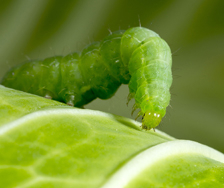
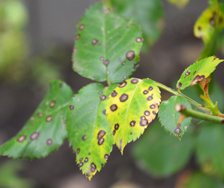
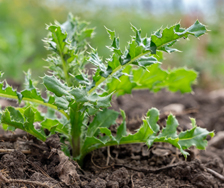
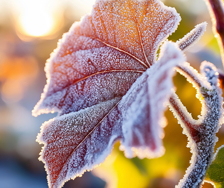
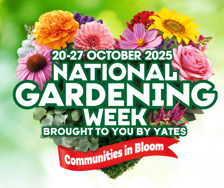









Share
Share this article on social media